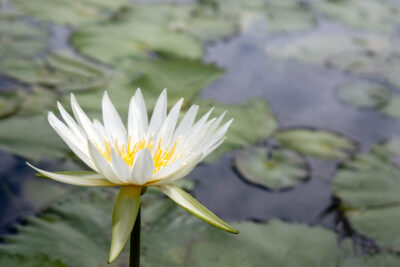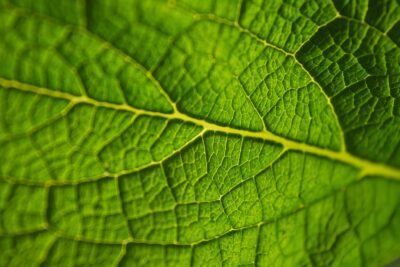
Velvet Touch: Discovering the Succulent with Soft Fuzzy Leaves

Velvet Touch: Discovering the Succulent with Soft Fuzzy Leaves is an article that delves into the fascinating world of succulents. Succulents have gained popularity in recent years due to their unique and striking appearance, as well as their ability to thrive in various climates and conditions. Among the vast array of succulents, there is one particular group that stands out for its soft and fuzzy leaves, giving it a distinct velvet-like texture. This article explores the characteristics, care tips, and popular varieties of succulents with soft fuzzy leaves, providing valuable insights for succulent enthusiasts and those looking to add a touch of velvet to their indoor or outdoor gardens.
We will delve into the fascinating world of succulents with soft fuzzy leaves. We will discuss the unique characteristics that set these succulents apart, such as their velvety texture and striking appearance. Additionally, we will explore the care requirements for these plants, including lighting, watering, and soil preferences. Furthermore, we will showcase some of the most popular varieties of succulents with soft fuzzy leaves, highlighting their individual features and how they can be incorporated into different garden designs. Whether you are a seasoned succulent collector or a beginner looking to add some greenery to your space, this article will provide you with the knowledge and inspiration to cultivate and appreciate these beautiful velvet-like succulents.
- Choose succulents with soft fuzzy leaves, such as Echeveria 'Velvet Touch'
- Place the succulent in a well-draining potting mix to prevent overwatering
- Water the succulent sparingly, allowing the soil to dry out between waterings
- Provide the succulent with bright but indirect sunlight, avoiding direct afternoon sun
- Maintain a consistent temperature, ideally between 60-75°F (15-24°C), for optimal growth
- Fertilize the succulent with a balanced liquid fertilizer diluted to half strength every few months
- Prune any dead or damaged leaves to promote healthy growth
- Repot the succulent every 2-3 years to refresh the soil and provide more space for growth
- Keep an eye out for common pests like mealybugs or spider mites and treat them promptly
- Enjoy the soft, velvety texture of your succulent's leaves and the beauty it adds to your space
- Frequently Asked Questions
Choose succulents with soft fuzzy leaves, such as Echeveria 'Velvet Touch'
Succulents with Soft Fuzzy Leaves
If you're a fan of succulents, you're probably familiar with their thick and fleshy leaves that are perfect for storing water. However, did you know that there is a unique group of succulents that have an added touch of softness? These are the succulents with soft fuzzy leaves, which not only have the signature resilience of succulents but also offer a delightful tactile experience.
One popular succulent in this category is the Echeveria 'Velvet Touch'. As the name suggests, this variety of Echeveria has a velvety texture that is incredibly pleasing to touch. Its leaves are covered in tiny, soft hairs that give them a fuzzy appearance and a luxurious feel.
There are several reasons why succulents with soft fuzzy leaves, like Echeveria 'Velvet Touch', are highly sought after by plant enthusiasts:
- Aesthetics: The soft fuzziness of these succulents adds a unique visual appeal to any indoor or outdoor garden. The velvety texture creates an interesting contrast when paired with other succulents or plants with different leaf textures.
- Tactile Sensation: Running your fingers over the soft fuzzy leaves of these succulents is a sensory delight. It adds another layer of enjoyment to caring for and interacting with your plants.
- Conversation Starter: Succulents with soft fuzzy leaves often catch the attention of visitors due to their unusual texture. They become an excellent conversation starter and a way to share your love for plants with others.
If you're considering adding a touch of softness to your succulent collection, Echeveria 'Velvet Touch' is a fantastic choice. Its compact rosette-shaped growth habit makes it suitable for both indoor and outdoor settings. Just ensure it receives adequate sunlight and well-draining soil to thrive.
 Arizona's Native Succulents: A Biodiversity Oasis
Arizona's Native Succulents: A Biodiversity OasisSo, why not give in to the allure of velvet touch succulents? Explore the world of succulents with soft fuzzy leaves and discover the beauty they bring to your plant collection.
Place the succulent in a well-draining potting mix to prevent overwatering
When it comes to caring for your succulent, one of the most important aspects to consider is the choice of potting mix. Succulents thrive in well-draining soil, as this prevents the roots from sitting in excess water and becoming waterlogged. This can lead to root rot and ultimately the death of your plant.
Opt for a potting mix specifically designed for succulents or cacti. These mixes are typically composed of a combination of organic materials, such as peat moss or coconut coir, and inorganic materials, such as perlite or pumice. The organic materials help retain some moisture, while the inorganic materials ensure excellent drainage.
When repotting your succulent, choose a pot with drainage holes at the bottom. This allows excess water to escape freely, preventing water from pooling at the bottom of the pot. If you have fallen in love with a pot that does not have drainage holes, consider drilling some yourself or using it as a decorative pot within a well-draining container.
Once you have chosen the right potting mix and container, it's time to plant your succulent. Gently remove the succulent from its current pot, being careful not to damage the roots. Place the succulent in the new pot, making sure to position it at the same depth as it was in its previous container.
Next, fill the gaps around the succulent with the potting mix, gently pressing it down to secure the plant in place. Be mindful not to bury the succulent too deeply, as this can lead to stem rot. Leave a small gap between the top of the soil and the rim of the pot to prevent water from overflowing when you water your plant.
 Haworthia: Unveiling the Unique Beauty of a Charming Succulent
Haworthia: Unveiling the Unique Beauty of a Charming SucculentGive your newly potted succulent a good watering, ensuring that the soil is thoroughly moistened. However, be cautious not to overwater, as this can also be detrimental to your succulent's health. Allow the soil to dry out between watering sessions, as succulents prefer a drier environment.
Remember to place your succulent in a location that receives plenty of bright, indirect sunlight. This will help your succulent grow and thrive, providing it with the necessary light energy for photosynthesis.
Water the succulent sparingly, allowing the soil to dry out between waterings
One of the key factors in successfully caring for a succulent with soft fuzzy leaves, such as the Velvet Touch, is to water it sparingly. These types of succulents are adapted to survive in arid conditions, so they have the ability to store water in their leaves and stems. Overwatering can lead to root rot and other issues, so it's important to allow the soil to dry out between waterings.
When it comes to watering your Velvet Touch succulent, it's best to follow the "soak and dry" method. This means that when you do water it, you thoroughly saturate the soil until water drains out of the bottom of the pot. Then, you wait until the soil is completely dry before watering again. This mimics the natural rainfall patterns in their native habitats.
It's important to note that the frequency of watering will vary depending on factors such as the climate and the size of your succulent. In general, during the warmer months, you may need to water your Velvet Touch succulent once every 1-2 weeks. However, during the cooler months or in a more humid environment, you may only need to water it once every 3-4 weeks.
Additionally, it's crucial to use well-draining soil specifically formulated for succulents. This type of soil allows excess water to drain away quickly, preventing the roots from sitting in water and potentially rotting. You can also consider adding perlite or coarse sand to the soil mix to improve drainage.
 Discover the Succulent That Looks Just Like an Artichoke!
Discover the Succulent That Looks Just Like an Artichoke!Remember, it's always better to underwater than to overwater your Velvet Touch succulent. These resilient plants can withstand periods of drought, but they are much more susceptible to root rot caused by excess moisture. By following these watering guidelines, you'll ensure that your succulent thrives with its soft, fuzzy leaves intact.
Provide the succulent with bright but indirect sunlight, avoiding direct afternoon sun
When it comes to caring for your succulent with soft fuzzy leaves, sunlight plays a crucial role in its overall health and growth. While these plants thrive in bright light, it is important to provide them with indirect sunlight to avoid any damage to their delicate foliage.
Avoid placing your succulent in direct afternoon sun, as the intense heat can scorch its leaves and hinder its growth. Instead, choose a spot where it can receive bright, filtered sunlight throughout the day.
Indoor succulents can benefit from being placed near a window that gets ample sunlight, but make sure to provide a sheer curtain or blinds to diffuse the light. This will protect the succulent from direct exposure to harsh rays while still allowing it to soak in the essential light it needs to thrive.
Similarly, outdoor succulents should be positioned in areas where they are shielded from the scorching midday sun. Opt for spots with partial shade, such as under a tree or near a building, where the succulent can enjoy bright yet gentle sunlight.
In addition to providing the right amount of sunlight, it is essential to monitor your succulent's response to its current placement. If you notice any signs of sunburn, such as brown or discolored patches on the leaves, it may be an indication that the plant is receiving too much direct sunlight. In such cases, adjust its position accordingly to ensure its well-being.
 Succulent Identification Guide: Identify Your Plant with Ease
Succulent Identification Guide: Identify Your Plant with EaseMaintain a consistent temperature, ideally between 60-75°F (15-24°C), for optimal growth
Why Temperature Matters
When it comes to growing succulents, maintaining the right temperature is crucial for their optimal growth. Succulents, known for their ability to store water in their leaves, have adapted to thrive in arid climates with high temperatures.
However, not all succulents are created equal. Some varieties, like the Velvet Touch succulent, have soft fuzzy leaves that require a slightly different temperature range for the best results.
Keeping your Velvet Touch succulent in a consistent temperature range of 60-75°F (15-24°C) will ensure its well-being and encourage healthy growth.
Here are a few reasons why temperature is important for your Velvet Touch succulent:
 Succulent Identification: Discovering the Tiny Yellow Flowered Variety
Succulent Identification: Discovering the Tiny Yellow Flowered Variety1. Growth and Development
Consistent temperatures within the recommended range provide the ideal conditions for your Velvet Touch succulent to grow and develop. This temperature range mimics the natural environment of these plants, allowing them to thrive and reach their full potential.
Extreme temperatures, either too hot or too cold, can hinder the growth and development of your succulent. It may cause the leaves to become stressed, wilt, or even die if exposed to unfavorable conditions for extended periods.
2. Avoiding Temperature Extremes
Velvet Touch succulents are particularly sensitive to extreme temperatures. They prefer a moderate climate and can suffer if exposed to excessive heat or cold for prolonged periods.
Extreme heat can cause the leaves to become scorched or sunburned, leading to discoloration and damage. On the other hand, extreme cold can cause the leaves to become frostbitten and turn mushy.
 Understanding Fuzzy Leaves on Succulent Plants: Normal Characteristics
Understanding Fuzzy Leaves on Succulent Plants: Normal CharacteristicsBy maintaining a consistent temperature within the recommended range, you can protect your Velvet Touch succulent from these temperature extremes and ensure its longevity.
3. Optimal Water Absorption
Proper temperature plays a vital role in the succulent's ability to absorb water efficiently. Velvet Touch succulents have adapted to store water in their leaves, but they still require regular watering.
When the temperature is too low, the succulent's metabolic processes slow down, making it difficult for them to absorb and utilize water effectively. Conversely, high temperatures can cause the water to evaporate too quickly, leading to dehydration.
By maintaining a consistent temperature within the recommended range, you provide your Velvet Touch succulent with the optimal conditions to absorb and retain water, promoting overall health and growth.
 Unique Succulent: A Ruby Necklace-Inspired Find
Unique Succulent: A Ruby Necklace-Inspired Find4. Preventing Pests and Diseases
Temperature fluctuations can weaken your Velvet Touch succulent's defenses, making it more susceptible to pests and diseases. Extreme temperatures stress the plant, compromising its natural ability to fend off invaders.
By keeping the temperature within the recommended range, you create an environment that promotes a strong and healthy succulent. This enhances its ability to combat pests and diseases naturally, reducing the risk of infestation or infection.
Remember, maintaining a consistent temperature is key to the well-being of your Velvet Touch succulent. By providing the right conditions, you can enjoy its soft fuzzy leaves and witness its beauty thrive.
Fertilize the succulent with a balanced liquid fertilizer diluted to half strength every few months
Proper fertilization is essential for the healthy growth and development of your succulent. To ensure that your velvet touch succulent thrives, it is recommended to fertilize it with a balanced liquid fertilizer diluted to half strength every few months.
A balanced liquid fertilizer contains equal amounts of nitrogen, phosphorus, and potassium, providing your plant with the necessary nutrients it needs to flourish. Diluting the fertilizer to half strength is important to avoid over-fertilization, which can lead to burning the roots or causing nutrient imbalances.
 Understanding Translucent Leaves: A Healthy Indicator for Succulents?
Understanding Translucent Leaves: A Healthy Indicator for Succulents?When applying the fertilizer, make sure to follow the instructions provided by the manufacturer. Generally, you can mix the fertilizer with water in a separate container, following the recommended dilution ratio. Once the mixture is ready, gently pour it onto the soil around the base of the succulent, taking care not to splash it on the leaves.
It's important to note that succulents have a natural ability to store water in their leaves and stems, allowing them to survive in arid conditions. Therefore, they don't require frequent fertilization like other plants. Fertilizing every few months will provide the necessary nutrients without overwhelming the plant.
Additionally, keep in mind that succulents prefer well-draining soil. Before fertilizing, ensure that the soil is slightly moist but not waterlogged. This will allow the plant to absorb the nutrients effectively and prevent waterlogging, which can lead to root rot.
Remember, fertilization is just one aspect of caring for your velvet touch succulent. Providing adequate sunlight, proper watering, and maintaining the right temperature and humidity levels are equally important for its overall well-being. With the right care and attention, your succulent with soft fuzzy leaves will thrive and bring a touch of elegance to your indoor or outdoor space.
Prune any dead or damaged leaves to promote healthy growth
When it comes to caring for your succulents, one important task is to regularly prune any dead or damaged leaves. Pruning not only helps to maintain the overall appearance of your plant but also promotes healthy growth.
Dead or damaged leaves can be a result of various factors, including overwatering, underwatering, or exposure to extreme temperatures. These leaves not only detract from the beauty of your succulent but can also hinder its growth by diverting resources from healthy parts of the plant.
 Cacti and Succulents: A Comprehensive Book Guide
Cacti and Succulents: A Comprehensive Book GuideTo begin the pruning process, carefully examine your succulent for any leaves that appear shriveled, discolored, or mushy. These are clear indicators of dead or damaged leaves that should be removed. Using a pair of clean and sharp scissors or pruning shears, make a clean cut as close to the base of the leaf as possible. It's important to avoid tearing or damaging the healthy parts of the plant while pruning.
Pruning dead or damaged leaves also helps to prevent the spread of diseases or pests. Removing these potentially harmful leaves reduces the chances of infections and allows your succulent to thrive in a healthy environment.
Benefits of Pruning Dead or Damaged Leaves:
- Promotes healthy growth: By removing dead or damaged leaves, you allow your succulent to focus its energy on growing new, healthy leaves.
- Enhances the appearance: Pruning helps maintain the aesthetic appeal of your succulent by eliminating unsightly dead or discolored leaves.
- Prevents disease and pests: Removing dead leaves reduces the risk of diseases and pests that can harm your succulent.
- Improves air circulation: Pruning helps create space between leaves, allowing for better air circulation and reducing the chances of fungal growth.
- Encourages branching: When you prune, it stimulates the growth of new branches, resulting in a fuller and more vibrant succulent.
Remember to always sanitize your pruning tools before and after use to prevent the spread of any potential infections. Additionally, it's advisable to wear gloves while handling succulents with sharp spines or thorns.
By regularly pruning dead or damaged leaves, you can ensure that your succulent stays healthy, visually appealing, and continues to thrive in your collection.
Repot the succulent every 2-3 years to refresh the soil and provide more space for growth
Repotting your succulent every 2-3 years is essential for maintaining its health and promoting optimal growth. Over time, the soil in the pot becomes depleted of nutrients, and the roots may outgrow the container. By repotting, you can refresh the soil and give your succulent more room to spread its roots and thrive.
Here are some steps to follow when repotting your succulent:
 Discover the Fascinating Foliage Patterns of the Snake-Like Succulent!
Discover the Fascinating Foliage Patterns of the Snake-Like Succulent!- Choose the right time: The best time to repot your succulent is during its active growing season, which is usually in spring or early summer. Avoid repotting during the dormant winter months.
- Select a suitable pot: Choose a new pot that is slightly larger than the current one. Ensure that it has drainage holes to prevent waterlogging, which can lead to root rot.
- Prepare the potting mix: Use a well-draining potting mix specifically formulated for succulents. You can also create your own mix by combining equal parts of perlite, coarse sand, and potting soil.
- Remove the succulent from its current pot: Gently loosen the soil around the succulent and carefully lift it out of the pot. Be cautious not to damage the roots.
- Inspect the roots: Check the roots for any signs of rot or damage. Trim off any dead or mushy roots using a clean, sharp pair of scissors or pruning shears.
- Plant the succulent in the new pot: Place a layer of fresh potting mix at the bottom of the new pot. Position the succulent in the center and add more soil around it, ensuring that the roots are covered and supported. Gently press the soil to secure the plant.
- Allow the succulent to settle: After repotting, refrain from watering the succulent for about a week to allow the roots to adjust and prevent potential root rot. Place the newly potted succulent in a bright, indirect light location.
- Resume regular care: Once the succulent has settled in its new pot, resume your regular watering and care routine. Remember to water sparingly and only when the soil is completely dry.
By following these repotting guidelines, you can ensure that your succulent continues to thrive and maintain its velvety soft, fuzzy leaves for years to come.
Keep an eye out for common pests like mealybugs or spider mites and treat them promptly
When it comes to caring for your succulents, it's important to be on the lookout for common pests that can cause damage to your plants. Mealybugs and spider mites are two of the most common pests that can infest your succulents.
Mealybugs are small, soft-bodied insects that typically appear as white, cotton-like clusters on the leaves and stems of your plants. These pests feed on the sap of the succulent, causing the leaves to turn yellow and eventually die off. To treat a mealybug infestation, you can use a cotton swab soaked in rubbing alcohol to remove them from the plant. Additionally, you can introduce natural predators like ladybugs or lacewings to help control the population.
Spider mites, on the other hand, are tiny pests that are barely visible to the naked eye. They are known to create fine webbing on the leaves of succulents and feed on the plant's sap. Infested leaves may exhibit yellow spots or stippling, and if left untreated, the plant's overall health can decline. To combat spider mites, you can spray your succulents with a mixture of water and mild dish soap or use a commercial insecticidal soap. Regularly wiping the leaves with a damp cloth can also help remove these pests.
Remember, early detection and prompt treatment are crucial in preventing the spread of pests and preserving the health of your succulents. Regularly inspecting your plants and taking necessary precautions can go a long way in maintaining their well-being.
Enjoy the soft, velvety texture of your succulent's leaves and the beauty it adds to your space
When it comes to succulents, we often think of their thick, fleshy leaves and their ability to thrive in arid conditions. But did you know that there is a unique group of succulents that has an added touch of softness? These succulents, with their fuzzy or velvety leaves, bring a whole new level of texture and visual appeal to your indoor or outdoor space.
Why Choose Velvet-Like Succulents?
Velvet-like succulents, also known as fuzzy succulents, are a delightful addition to any plant collection. Their soft leaves not only provide a pleasing tactile experience but also create a visual contrast to the glossy or smooth leaves of other succulent varieties.
One of the main reasons to choose velvet-like succulents is their unique texture. Running your fingers across their leaves feels like touching a delicate piece of velvet fabric. This tactile sensation can be quite therapeutic and soothing, making these succulents perfect for stress relief.
Moreover, the soft, fuzzy leaves of these succulents add a touch of elegance and luxury to your space. The velvety texture creates a sense of opulence and makes them stand out among other plants. Whether you place them on a windowsill, a desk, or in a hanging planter, these succulents are sure to draw attention and become a conversation starter.
Popular Varieties of Velvet-Like Succulents
There are numerous varieties of velvet-like succulents available, each with its own unique charm. Some of the most popular ones include:
- Kalanchoe Tomentosa (Panda Plant): With its silvery gray leaves covered in soft white hairs, this succulent resembles a fluffy panda bear.
- Echeveria Pulvinata (Chenille Plant): Also known as the "Chenille Plant," this succulent features long, fuzzy leaves that resemble the caterpillar-like chenille fabric.
- Senecio Radicans (String of Tears): This trailing succulent has tear-shaped leaves covered in fine, fuzzy hairs, giving it a delicate and elegant appearance.
These are just a few examples of the many velvet-like succulents available. Each variety brings its own unique texture, color, and charm to your collection, allowing you to create visually stunning arrangements and displays.
Caring for Velvet-Like Succulents
Caring for velvet-like succulents is quite similar to caring for other succulents. They thrive in well-draining soil and prefer bright, indirect sunlight. However, their soft leaves require extra caution to prevent damage.
It is essential to avoid getting water on the leaves, as this can cause them to rot or develop fungal diseases. Instead, water the soil directly, allowing it to dry out between waterings. Additionally, be mindful not to touch the leaves excessively, as this can remove the fine hairs and affect their velvety texture.
As with any succulent, it is essential to observe the specific care requirements of each variety. Some velvet-like succulents may have slightly different needs, such as temperature preferences or specific watering schedules. Consulting a care guide or a knowledgeable plant expert can help you ensure the best conditions for your velvet-like succulents.
So, if you want to add a touch of softness and luxury to your plant collection, consider incorporating velvet-like succulents. Their velvety texture, unique appearance, and easy care make them a perfect choice for both succulent enthusiasts and beginners alike.
Frequently Asked Questions
1. What is a Velvet Touch plant?
A Velvet Touch plant is a succulent that has soft, fuzzy leaves, giving it a velvety texture.
2. How do I care for a Velvet Touch plant?
Velvet Touch plants require bright, indirect sunlight and well-draining soil. They should be watered sparingly, allowing the soil to dry out between waterings.
3. Can I propagate a Velvet Touch plant?
Yes, Velvet Touch plants can be easily propagated by taking stem cuttings or by separating offsets from the parent plant.
4. Are Velvet Touch plants pet-friendly?
No, Velvet Touch plants are not considered pet-friendly as they can be toxic to cats and dogs if ingested. It is best to keep them out of reach of pets.
If you want to read more articles similar to Velvet Touch: Discovering the Succulent with Soft Fuzzy Leaves, you can visit the Identification category.






You Must Read